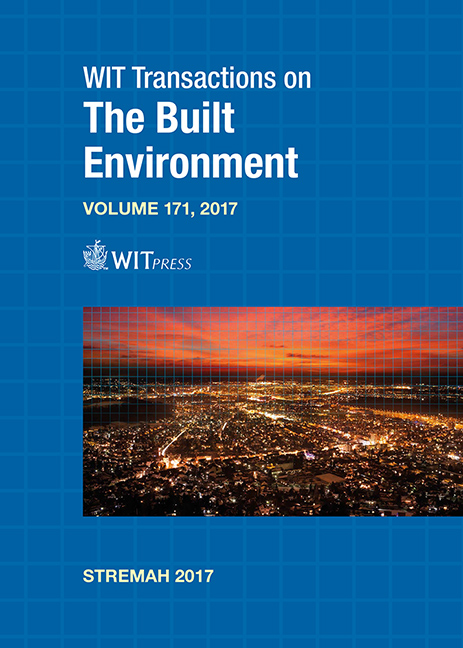SIMULATION OF BIOCLIMATIC SYSTEMS IN DETACHED HOUSES: REDUCED ENERGY DEMAND BY USING SPACE IN THE BASEMENT
Price
Free (open access)
Transaction
Volume
171
Pages
12
Page Range
17 - 28
Published
2017
Paper DOI
10.2495/STR170021
Copyright
WIT Press
Author(s)
FERNANDO ECHARRI IRIBARREN, VÍCTOR ECHARRI IRIBARREN, ALMUDENA ESPINOSA FERNÁNDEZ
Abstract
The climate conditions of the Mediterranean coast in Spain require a high energy demand in detached houses. Traditionally, vernacular architecture obtained an air interior temperature in summer of around 26°C – in principle quite comfortable because the superficial temperature of the walls was less than 23°C – by using masonry walls of around 50 cm in thickness. However, the high amount of air infiltrating through doors and windows, together with the difficulty of expelling the water vapour generated by people, meant that in practice the conditions of comfort were less satisfactory. Modern architecture changed these building patterns. Multi-layered walls are achieved with much less thickness, usually giving a 4 cm thick layer of insulation and an air chamber. With this, the thermal inertia is greatly reduced. But the most relevant factor of change is the increase in the glass area of these houses. Although double glazing substantially reduces the thermal transmittance value, the energy demand is considerably higher. However, structural techniques make it possible to introduce bioclimatic systems that can be put to advantage. This research looks into the benefits of having living space in the basement, as a method of passive temperature control in summer. We studied a detached house on the coast of Alicante, where the moderate temperature of the ground tempers the interior conditions of comfort using the flow of air from the basement towards the upper floors, significantly reducing the energy demand. This reduction was quantified through simulations with the tool Design Builder, in the scenarios of a traditional house, a house without basement and one with basement. Lastly, due to its importance, we quantified the role of air infiltration through the enclosure in that demand for energy. The results obtained are significant. In summer, it’s possible to reduce in 3°C the indoor air temperature in the ground floor, obtaining an improvement in the user comfort sensation of 85%. Annual energy demand is reduced by 18% compared to traditional buildings. The layout of the basement, as a passive system in the studied houses, reduces that energy demand by 20% more.
Keywords
passive systems, temperature control, energy demand, simulation, air infiltration




